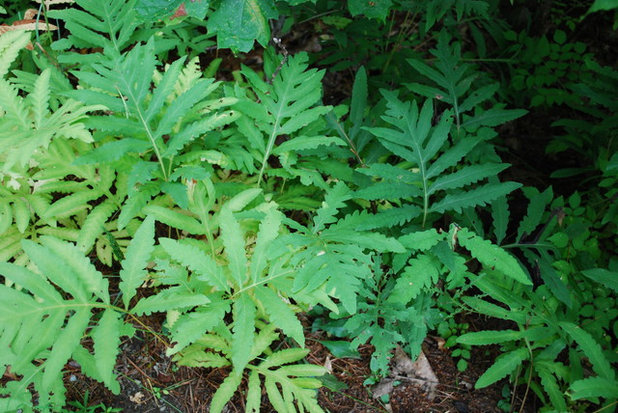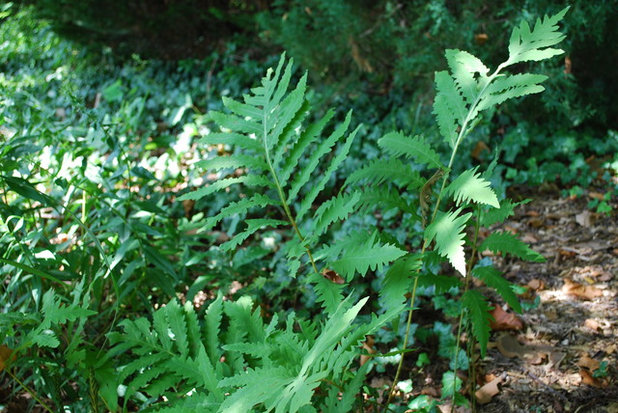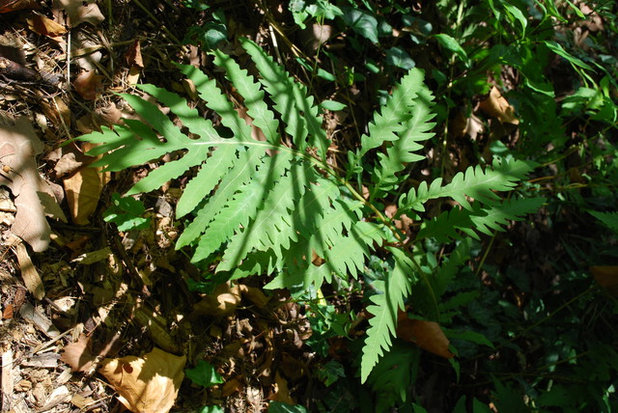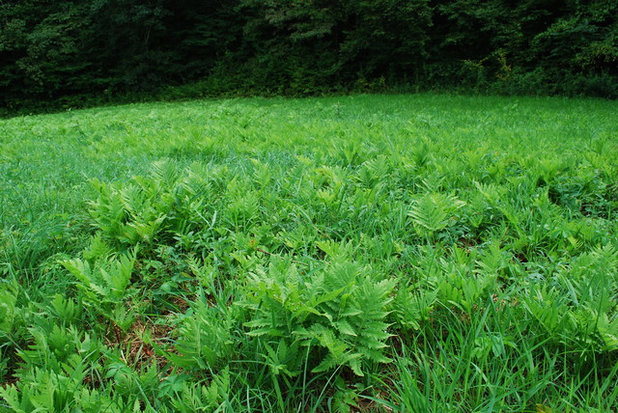Ferns elicit primal human emotions, which is why many gardeners, including myself, are drawn to them. They mentally transport us to another place and time. Just five minutes in my fern garden can be the antidote to one of my busy and stressful days, and is reason enough for me to plant them.
Also consider the fact that many ferns are native to a wide range of areas in the U.S., which is becoming more important to many gardeners. Since many fern species look quite similar, I am always on the lookout for something a bit different. I recently became reacquainted with sensitive fern (
Onoclea sensibilis). Let’s take a look.

Jay Sifford Garden Design
Botanical name: Onoclea sensibilisCommon names: Sensitive fern, bead fern
Origin: The eastern two-thirds of the U.S. and eastern Canada
Where will it grow: Hardy to -30 degrees Fahrenheit (USDA zones 4 to 8; find your zone)
Water requirement: Consistently moist to wet soil for optimal growth
Light requirement: Full to partial shade; can handle some sun if the soil is kept moist
Mature size: 3 feet tall and wide under optimal conditions, although 1 foot to 2 feet tall and wide is more realistic in most gardens
Benefits and tolerances: Deer resistant; its unique texture and compact size make it useful in a variety of garden contexts; it flourishes as a ground cover in wet, shady conditions, where choices are limited

Jay Sifford Garden Design
Seasonal interest: This deciduous fern makes a lively appearance in midspring and continues to look fresh until fall, when it dies back for the winter. By late summer it sends up its tightly curled, fertile fronds. In fact, the genus name comes from two Greek words that translate as “closed vessel.” The common name comes from the fact that its foliage is quite susceptible to frost.
When to plant: Spring or fall is best

Jay Sifford Garden Design
Distinguishing traits. Sensitive fern is unique in that the leaves are quite broad and very serrated. Although not considered invasive, this fern spreads rapidly by underground rhizomes when happy, so take this into consideration before planting it in wet, shaded conditions.
This fern, along with many others, produces toxic chemicals that render it deer resistant. It is good practice to plant ferns out of reach of grazing animals and small children.

Jay Sifford Garden Design
How to use it. Sensitive fern, as shown in this open field in New York, can be used as a ground cover in moist conditions, where choices are limited. Because of its relatively short stature, it is also beautiful tucked among rocks along water features.
Its unique foliage also contrasts beautifully with that of a variety of large-leafed shade plants, such as leopard plant (
Farfugium japonicum, zones 7 to 10, previously
Ligularia spp) and rodgersia (
Rodgersia spp
, zones 5 to 7). As with most ferns, sensitive fern creates a more dramatic effect if planted in groups or even masses, rather than singly.
Planting notes. Plant it in moist soil amended with plenty of organic matter, such as mushroom compost or composted manure.





